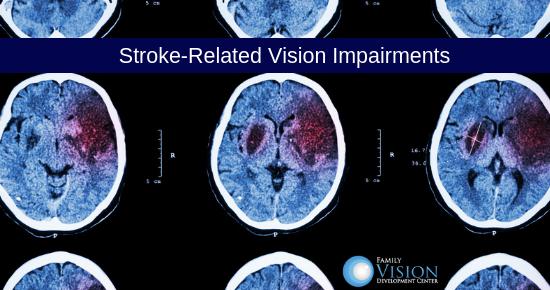A stroke occurs when blood flow to an area of the brain is cut off and brain cells begin to die due to a lack of oxygen. When this happens, abilities that are controlled by the affected area of the brain can be impaired. Vision disturbances often occur after a stroke and vision therapy can be implemented as a form of treatment. Some forms of vision impairment resulting from a stroke include the following:
Spatial Inattention
Commonly referred to as “neglect”, this form of impairment causes a person to ignore everything on the side of the brain that was affected by the stroke (for example – leaving food untouched on the left side of a plate, or not shaving the left side of the face). In some cases, they might not even realize that side exists. Vision therapy can include learning to scan from side to side, or working with prisms or mirrors, in order to re-learn how to process information on that side.
Double Vision
Seeing two objects instead of one can be an effect of a stroke in the brainstem. The muscle weakness resulting from a stroke can cause double vision, or diplopia, and can be effectively treated with vision therapy through the use of exercises that encourage the eyes to work together.
Eye Movement Problems
Impaired eye movement are common after a stroke and can include an inability to follow objects with your eyes or move smoothly between objects, or quick, jerky eye movements that cause blurriness or dizziness. Visual rehabilitation can help alleviate these symptoms and restore the ability to perform everyday functions like reading or walking.
It is important to remember that not all visual impairments happen immediately after a stroke, so if you have experienced a stroke it is important to see your eye doctor regularly to ensure that any newly resulting vision issues are diagnosed and treated as soon as possible. Dr. Martin at Family Vision Development Center is specially trained in advanced vision therapy techniques. He will conduct a thorough exam to properly diagnose any stroke-related vision conditions and determine the most effective treatment options. Schedule your appointment online or call 630-862-2020.
Referenced articles here and here

